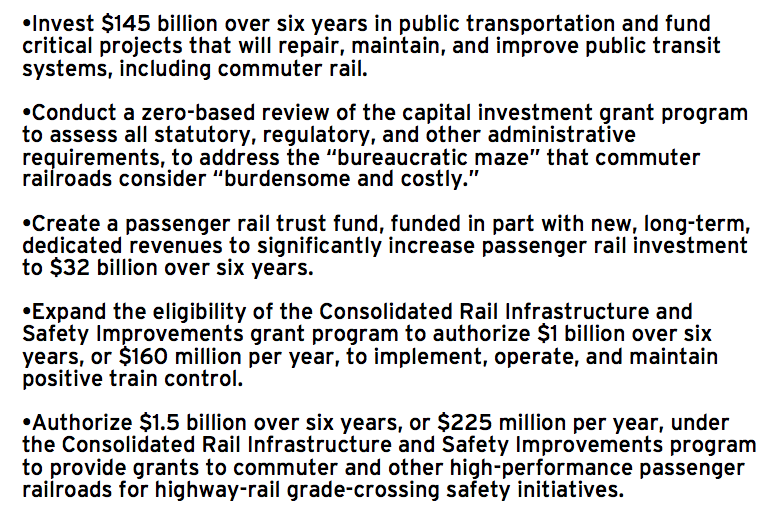At a hearing before the House Subcommittee on Railroads, Pipelines, and Hazardous Materials, titled, “Challenges and Opportunities for Commuter Railroads,” lawmakers heard testimony from the officials on the state of the commuter rail industry and challenges those service providers face in paying the cost of positive train control implementation, increasing service and maintaining a state of good repair on commuter railroads — a key phrase in funding discussions.
U.S. Rep. Dan Lipinski (D-Ill.), the subcommittee chairman, said it was important to call the hearing because the committee had not held a session solely on commuter rail in a decade. The timing is critical because legislators are beginning to draft next year’s reauthorization of surface transportation programs, and will have an opportunity to address commuter rail funding concerns, he said.
Paul Skoutelas, president and CEO of the American Public Transportation Association, gave an update on implementation of PTC, safety and trespassing on railroad properties, but his primary message was to urge Congress to increase investment to ensure that commuter rail agencies can pay for ongoing operation and maintenance costs of PTC and mitigate grade-crossing incidents.
“The federal, state, and local partnership is essential to ensure that critical investments are made to our public transportation systems,” Skoutelas said.
The commuter railroads “greatly appreciate” Congress’ support for by allowing them to be eligible for Consolidated Rail Infrastructure and Safety Improvements (CRISI) grants for PTC implementation, Skoutelas said. However, “more investment is needed to ensure that commuter rail agencies can pay for ongoing operation and maintenance costs of PTC, and other critical infrastructure needs,” he added.
In testimony, Skoutelas outlined areas of funding and APTA’s recommendations to Congress. He also noted that commuter railroads are focused on PTC implementation and are making “great progress.”
Skoutelas said six of the nation’s 32 commuter rail agencies have fully implemented PTC, and that four other agencies have implemented PTC on their railroads but are awaiting final actions from other railroads operating in the territory. The remaining commuter railroads are in revenue service demonstration or field testing and are “aggressively working” to complete PTC implementation by the December 2020 deadline.
PTC will cost commuter rail operators approximately $4.1 billion to implement, with almost 90 percent of these costs borne by state and local governments and agencies. Meanwhile, PTC will cost an estimated $160 million each year to operate and maintain, according to Skoutelas.
“For publicly funded agencies that rely on federal, state, and local funding, as well as passenger fares to operate their service, these costs are staggering,” Skoutelas said.















The federal gov’t is also making most of the rules and regulations. And therefore a big cost driver.
Commuter rail is great. Rep. Dan Lipinski who is a good guy (just about the only remaining Democrat who can call himself a moderate) is working for his West Chicagoland constituency. Let’s look at what’s proposed. Splitting subsidy for commuter between the local, the state, and the federal level only proves that the level of subsidy is becoming unsustainable.
Do I have an answer? No, I don’t have an answer. But someone has to face this fact: our entire economy is based on the federal government printing money. The supply of paper and ink seems limitless.